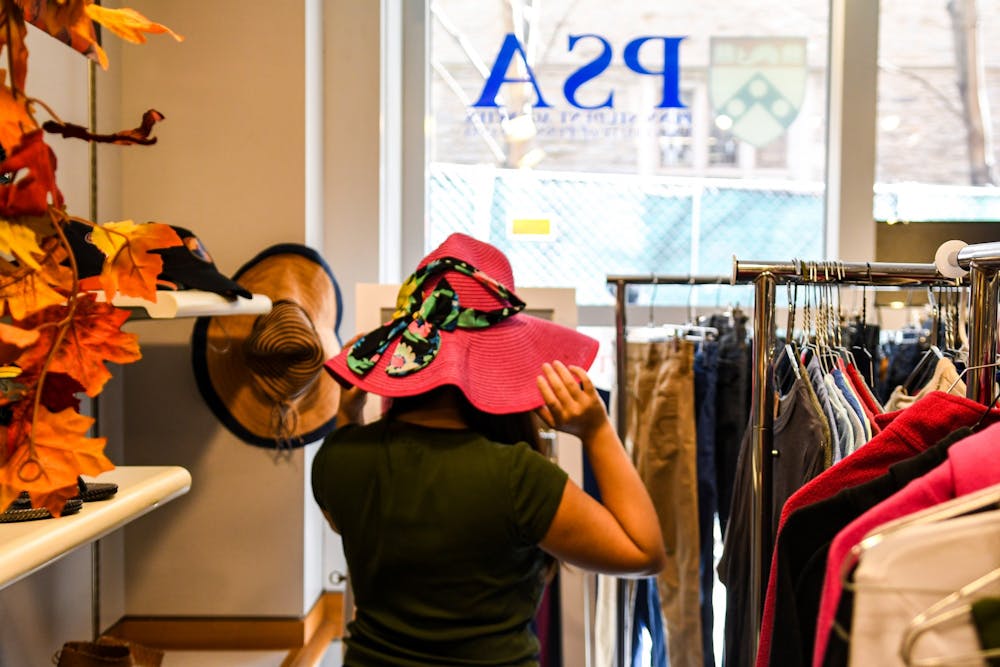There are some choices you make every single day, consciously or not. What you eat, where you’re going, who you meet...and what you wear. While one’s choice of clothing may seem like an unimportant everyday decision, the topic of fashion on campus has historical significance and continues to constantly influence our lives at Penn.
Fashion is an important part of how we express ourselves and how we’re perceived by others. In professional settings, this is especially pronounced. Studies have shown that our choice of clothing can significantly change how competent we appear, and it also affects how people judge our social class and background. While social class as a concept is less relevant today than it was historically, it still lead to prejudice and disadvantages. Class is a way of living — it is not simply wealth but an amalgamation of actions and behaviors that is embedded in our daily lives. Likewise, fashion is often used as a social class indicator. What you wear and how you wear it isn’t simply a tool of self-expression. Your depth of understanding can also work as its own unique form of social capital. Clothing represents subcultures, hobbies, interests, and even your background.
Universities have historically been at the center of many evolutions in fashion — to understand how we dress today, we need to take a look at the socio-economic background of how campus fashion still influences us.
Over the course of the 20th century, Ivy League schools waxed and waned as icons of fashion around the world. In fact, many fashion aesthetics — academia, prep, etc. — were inspired by campuses of this era. From the late 1800s to the early 1900s, “Ivy League style” was considered a symbol of wealth and status. This was partially due to the student population at the time: most university students were children of wealthy, majority-white families up until the mid-19th century. Naturally, universities were places of exclusivity, and as one of the oldest universities in the states, Penn was no exception.
The popularization of “Ivy League Fashion” emerged after the 1930s, when the conclusion of two World Wars led to America’s rapid growth into a global superpower. Accompanying such development was a boom of activity on college campuses. Country-wide attention on collegiate sports increased, and the fields of arts, sciences, and engineering came to the forefront of American prosperity. At the same time, universities began to admit more students from diverse backgrounds. Penn in particular changed their admittance policy to pursue diversity in 1967.
As colleges became more prominent and immediate to the layperson, college fashion — especially that of the Ivy League schools— became symbols of professionalism and education. One example is the Weejun penny loafer. First popularized by students at Yale, these penny loafers became what is considered an “instant classic;” its fast proliferation throughout Yale was quickly followed by the upper-middle class on the East Coast.
These styles later evolved into “preppy” fashion, and the clothing adopted by the Ivies were emulated because of the perceived prestige of the students. Later on, they became marketing tactics to make student life seem more visually appealing for prospective students, especially as college significance and competitiveness began to increase in American society. Items such as varsity jackets, club blazers, cable knit sweaters, and more staples in modern clothing all stem from this era.
Such collegiate and preppy fashion trends saw a steady fall in popularity in the following years, but they have recently resurfaced. Nostalgia has been a driving force behind this resurgence, especially during COVID-19. Now is the time to reconsider Penn’s campus fashion — how it shapes the world around us, and how it shapes our own lives.
Understanding and reviving campus fashion at Penn can thus greatly help students. The re-emergence of collegiate fashion as a trend, and the prevalence of “business” clothing being associated with preppy and academia fashion means that understanding these styles and utilizing them in our day-to-day lives can both prepare us for our professional lives and help augment how we’re perceived.
It can be difficult, however, to understand this context of fashion if one is either uninterested or hasn't had the opportunity to observe real-life examples. Even if you are surrounded by the most textbook examples of fashion styles, it’s easy to miss details.
It is interesting to note that many different communities at Penn have different attitudes towards fashion as well, and this diversity of daily style should be celebrated. While clothing is a tool, it remains flexible: choices of clothing that work for some students will not work for others. As a student both in SEAS and Wharton, I have noted how even more formal events among SEAS students require more casual clothing than those for Wharton.
So how can we as students contribute? The first step is spreading recognition. Provide opportunities for students who have an eye for different clothing styles and trends to share what they have observed personally. Build healthy community engagement with fashion and share it with others. For instance, get involved in the events held by Penn Closet to share donations and exchange affordable pieces of clothing with other students. There are also many ways to get involved with fashion-oriented clubs on campus — even simply attending an information session is a great place to start. On a broader scale, Penn should create opportunities not only for students to learn about fashion, but how other areas of social capital or presentation can help students in their careers.

ACE DAHYEON CHOI is a Wharton and Engineering junior studying economics and computer science from Seoul, South Korea. Her email is dhachoi@seas.upenn.edu.









